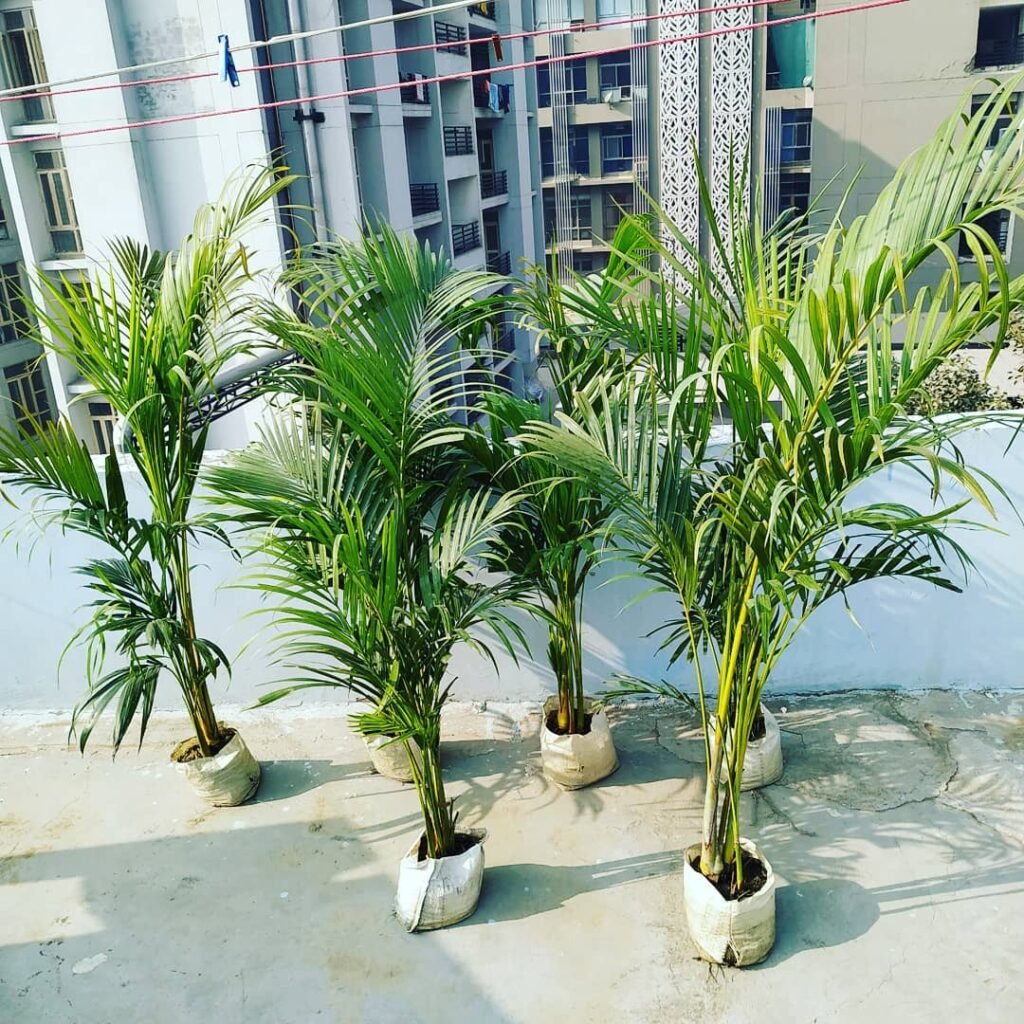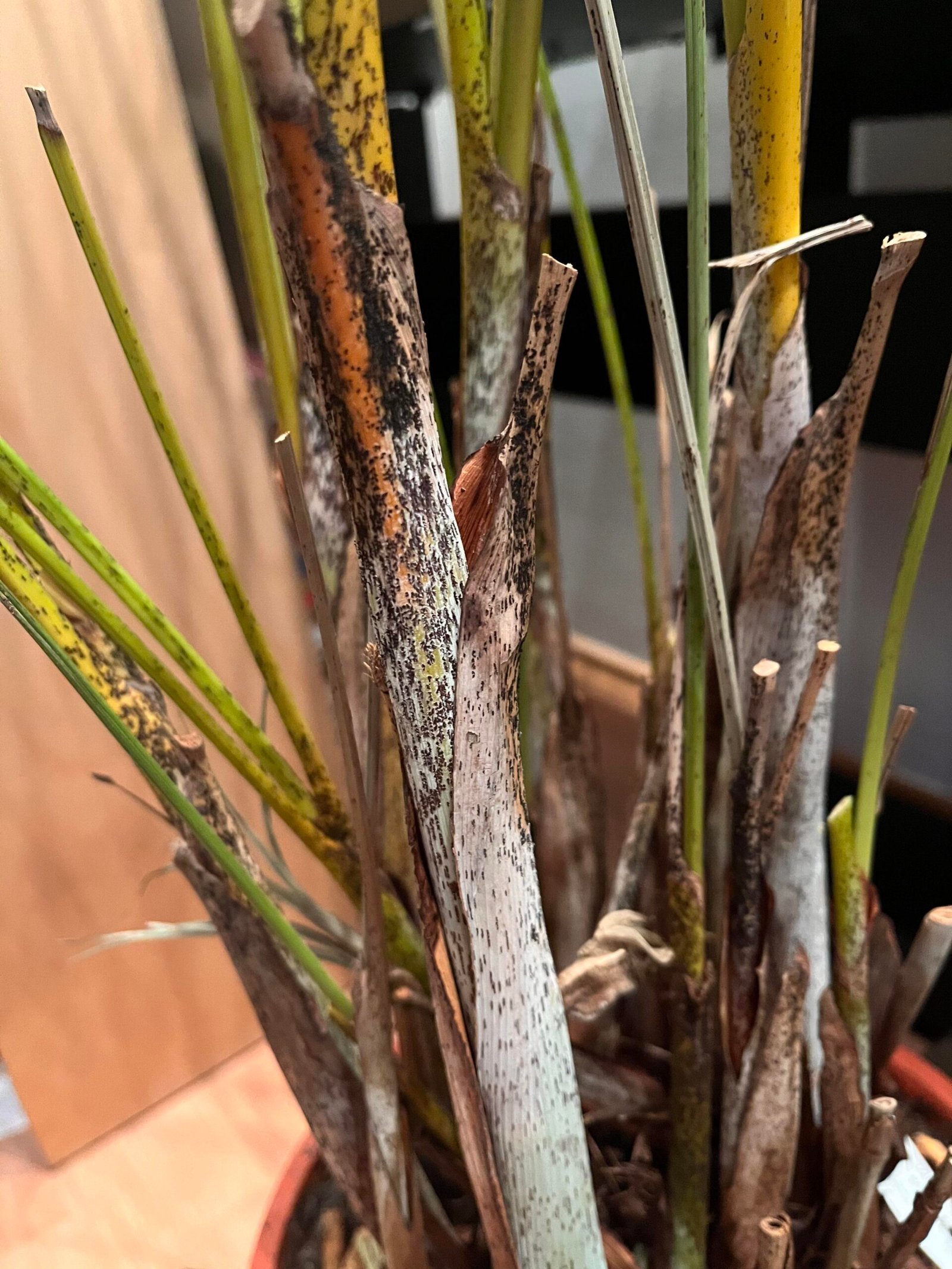Learn how to grow and care for beautiful areca palms, including planting requirements, tips for ideal watering and fertilizing, and design ideas for using these elegant tropical plants.
The areca palm is a gorgeous, feathery palm tree that makes an excellent addition to any warm, humid environment. With its tall, slender trunk and beautiful crown of arching fronds, it adds an instant tropical look and feel. While native to areas like Madagascar, the areca palm is a popular houseplant and landscape plant in many warm regions of the United States. This guide will cover everything you need to know to successfully grow and care for areca palms.
What is an Areca Palm

Here’s a short information chart for the Areca Palm:
| Attribute | Information |
|---|---|
| Botanical Name | Dypsis lutescens |
| Plant Type | Evergreen palm |
| Soil Type | Well-drained, fertile soil |
| Color Varieties | Green foliage |
| Zones | 10-11 (USDA Hardiness Zones) |
| Exposure | Bright, indirect light to partial shade |
| Bloom Time | Rarely flowers indoors |
| Height/Spread | 6-12 feet tall / 3-5 feet wide |
The areca palm (Dypsis lutescens) is a single-trunked palm tree in the Arecaceae or palm family. It’s sometimes called the bamboo palm, golden cane palm, or yellow butter palm. In its native habitat of Madagascar and parts of South Asia, it can reach heights of 30 feet or more outdoors.
As a houseplant or landscape plant, arecas typically top out between 6-10 feet tall, with the classic grass-green fronds arching gracefully from the top in a feathery crown. The slender, ringed trunks have a cane-like appearance, ranging from grayish to golden yellow in color depending on age and variety.
Arecas are considered one of the more cold-hardy palm varieties, able to tolerate brief temperatures down to around 25°F for short periods. However, they do best in very warm, humid environments and cannot survive freezing temperatures. They make excellent container plants that can move indoors during winter months in cooler climates.
Planting Areca Palms
Indoor vs Outdoor Planting
Areca palms can be grown as indoor houseplants, planted in containers on patios or decks, or grown in the ground as outdoor landscape specimens in warm, humid parts of the US. However, they require different potting mixes and planting conditions depending on whether grown indoors or out.
For houseplants or outdoor containers, use a fast-draining, lightweight potting mix made for palms. A mix containing ingredients like peat moss, perlite, and bark chunks works well. The pot or container needs bottom drainage holes.
When planting arecas in the ground, they require a warm, humid climate zone without risk of freezing temperatures (zones 10-12 in the US). Amend the native soil with compost, peat moss, or potting mix to create a fast-draining, acidic soil mixture similar to their natural rainforest environment.
Ideal Lighting

Conditions Areca palms originate from tropical rainforests and therefore need very bright, direct light – but with some protection from harsh midday sun. Indoors, place them near an eastern or western window where they’ll get 4-6 hours of direct morning or evening sunlight.
For outdoor plantings, situate them in a spot with bright, filtered light or morning sun with afternoon shade. Too much intense midday and afternoon sun can scorch the delicate fronds. If planted outdoors in full sun locations, provide artificial shade during peak sun hours.
Initial Planting
When planting a new areca palm, whether in a pot or the ground, make sure the root ball sits at the same level it was previously growing at. Planting too deep can lead to issues like rot or nutrient deficiencies.
Backfill around the root ball with the potting mix or amended soil, tamping down as you go to remove large air pockets. Water thoroughly immediately after planting to help settle the soil.
Support the slender trunk with a sturdy plant stake or moss pole until the palm becomes established and develops an anchor root system. This prevents toppling over before the roots can spread.
Also provide heat and humidity right after planting if possible, as arecas can go into transplant shock without a warm, humid environment. Incrementally expose them to normal home or outdoor conditions over 1-2 weeks.
Ongoing Areca Palm Care
Watering Needs

Proper watering is crucial for the health of areca palms. The soil or potting mix should be kept consistently moist, but not waterlogged.
Allow the top 1-2 inches to dry out slightly between waterings, then water thoroughly until it drains from the bottom. Discard any excess drained water from saucers or cachepots.
Indicators that your areca needs water include drooping or curling fronds, rather than their normal arching posture. Adjust your watering schedule based on the plant’s growth cycle, potting mix, and environmental conditions. Arecas need more water when actively growing and in warm weather.
Humidity is another key watering need – as tropical plants, arecas crave high humidity levels above 50%. Use pebble trays, misting, or a cool mist humidifier if indoor humidity is low.
Fertilizing

Feed your areca palm every 4-6 weeks during the warm spring and summer months using a balanced liquid fertilizer diluted to half strength. Look for fertilizers formulated for palms or acid-loving plants that contain nutrients like nitrogen, potassium, iron and manganese.
You can also top dress the soil with a slow-release palm fertilizer in early spring for a steady supply of nutrients through the growing season. Always follow product label instructions carefully.
Over-fertilizing and excess mineral salts can cause nutrient toxicity, visible as brown tips on the fronds. So use fertilizers sparingly. During winter dormancy, stop fertilizing completely.
Pruning and Grooming
Areca palms have naturally self-cleaning trunks, meaning old fronds will yellow and drop off as new ones emerge from the crown. While unsightly, it’s best to let yellowing fronds fall off on their own rather than pulling them.
You can prune off completely dead or broken fronds by cutting them off cleanly at the trunk. This prevents places for fungus or insects to enter. Use sterile pruners and avoid cutting into the trunk itself.
Periodically wipe down the remaining fronds with a damp cloth to remove dust buildup, which can inhibit growth.
Potential Problems

Grow your areca palm in the proper environmental conditions and it should remain healthy and largely problem-free. However, some common issues to watch for include:
- Nutrient deficiencies – Pale, yellowish fronds are a sign of micronutrient deficiencies like iron, manganese or magnesium. Use appropriate fertilizers and acid soil conditions.
- Frond browning – Tips or entire fronds turning brown or crispy is usually due to low humidity, underwatering, or salt buildup from hard water or overfertilizing.
- Fungal leaf spots – Various fungal diseases cause water-soaked spots or speckles on the fronds from excess moisture and poor air circulation.
- Spider mites – These pests cause stippling and webbing on the underside of fronds. Use insecticidal soaps or oils to control infestations.
- Bud rot or trunk diseases – Wet, overly humid conditions combined with poor drainage can lead to fatal trunk and crown rots or diseases like ganoderma butt rot.
With their preference for warm, humid environments, arecas can be prone to rot diseases if overwatered or exposed to low temps. Ensuring well-draining soil, airflow, and ideal environmental conditions prevents most major problems.
Design Uses for Areca Palms

With their slender trunks and graceful, feathery fronds, areca palms make excellent ornamental plants for adding a tropical flair to any landscape or interior space. Here are some popular design uses:
Indoor Houseplants One of the most common uses for arecas is as indoor houseplants or office plants. Their manageable height of 6-10 feet indoors makes them great for placing in floor containers or planters in bright rooms, lobbies, or atriums.
Be sure to provide adequate humidity, light, and proper soil conditions for indoor areca palms. Group several together in a decorative planter for a lush, jungle-like display.
Outdoor Container Plants Arecas also make striking patio, deck or entryway plants when grown in outdoor containers or planters. In warm climates, they can remain outdoors year-round as long as nighttime temps don’t dip below freezing.
Choose a container with good drainage and use a well-draining potting mix formulated for palms. Group three or five arecas of varying heights together in one large planter for an eye-catching accent piece.
Landscape Palm Trees In USDA hardiness zones 10-12, areca palms can be planted directly in the ground as ornamental landscape specimens or planted in clusters. When given enough space and warm, humid conditions, they’ll eventually reach their full mature height of 20-30 feet.
Plant areca palms to frame an entryway or driveway, line a walkway, or use them as an accent plant surrounded by lower shrubs or groundcovers. Be sure to provide adequate spacing of 6-12 feet between multiple trunks.
Their feathery, vertical form contrasts nicely with more horizontal landscape elements and plantings. Place them strategically to catch the eye and provide height and a tropical ambiance.
Poolside Plantings Areca palms love hot, humid conditions, making them perfect for poolside or backyard landscaping in warm climates. Plant them along the perimeter of a pool deck or adjacent to hot tubs or spas.
The high humidity and heat from the water helps these palms thrive. Just be sure not to over-water them if planted next to pools or fountains, as the excess moisture can lead to root rot.
You can also ring a pool or spa with potted areca palms on the deck for a sleek, resort-inspired look. Just be vigilant about drainage so the pots don’t become waterlogged.
No matter how you choose to use areca palms, their elegant, tropical appearance and easy care requirements make them a popular choice for interiors and humid warm-climate landscapes across the U.S. With the proper planting conditions and humidity levels, they’ll reward you with their graceful beauty for years to come.
Pingback: How to Grow and Care for Golden Goddess Philodendron
Pingback: How to Grow and Care for Areca Palms | Gardenin...
Pingback: The Elegant Parlour Palm: A Beginner's Guide to Caring for This Charming Houseplant - Solano Garden
Pingback: The Best Potted Palm Trees For Outdoors (With Pictures) -
Pingback: How to Grow and Care for Virginia Creeper Gardeners School